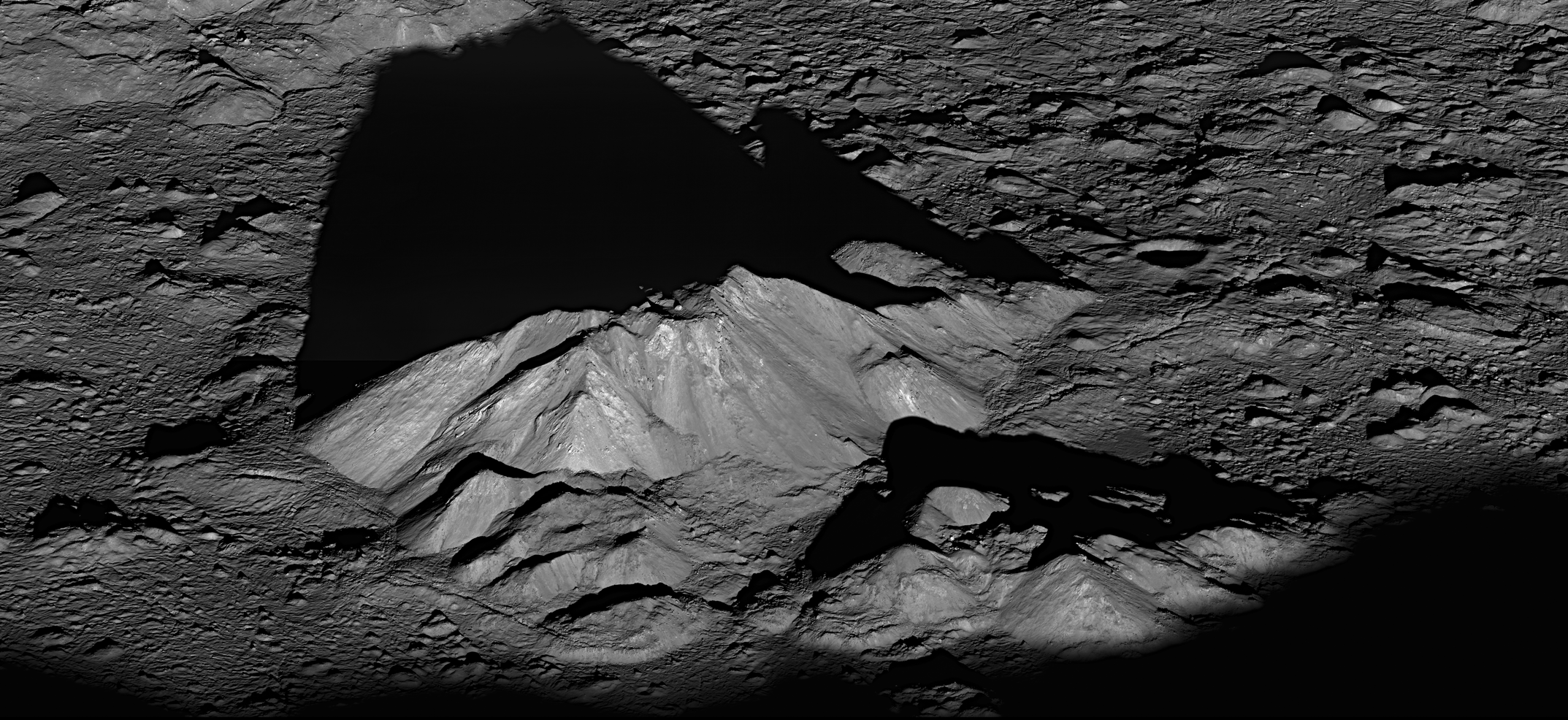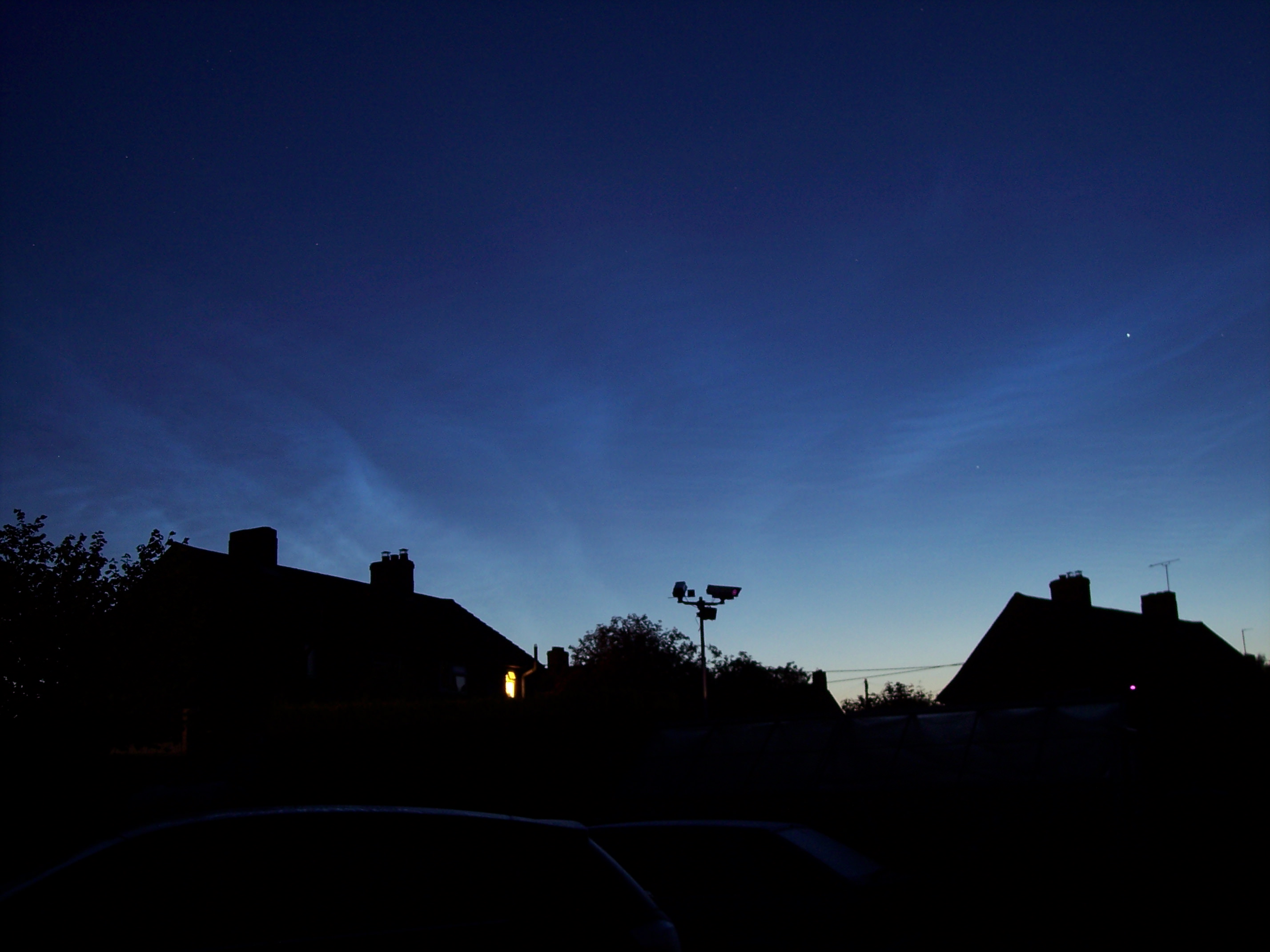Will Gater from the BBC’s Sky at Night Magazine shared this great video with us that shows some of the celestial sights that are you can see from your own backyard during the summer months. The video includes locator charts for all of the objects too, so you can see exactly where to find what you are looking for.
Spectacular View from LRO of Tycho Crater’s Central Uplifts
[/caption]
Here’s the Moon like you’ve never seen it before: a dramatic sunrise view of Tycho Crater on the Moon, highlighting the peaks and crags of the crater’s central uplifts. On June 10,2011 the Lunar Reconnaissance Orbiter slewed 65° to the west, allowing the Narrow Angle Camera to capture a “sideways” look at Tycho crater, resulting in a spectacular image. The central peak complex is about 15 km wide southeast to northwest (left to right in this view). Below are more images and a video which spans and zooms in to the entire image.
Tycho Crater is a very popular target with amateur astronomers since it is easily seen from Earth. The crater measures about 82 km (51 miles) in diameter, and the summit of the central peak is 2 km (6562 ft) above the crater floor, and the crater floor is about 4700 m (15,420 ft) below the rim.
Central uplifts form in larger impact craters in response to the impact event.
LROC principal investigator Mark Robinson wrote on the LRO website, “Tycho’s features are so steep and sharp because the crater is young by lunar standards, only about 110 million years old….Were these distinctive outcrops formed as a result of crushing and deformation of the target rock as the peak grew? Or do they represent preexisting rock layers that were brought intact to the surface? Imagine future geologists carefully making their way across these steep slopes, sampling a diversity of rocks brought up from depth.”
Here’s a close-up of the summit. The boulder in the background is 120 meters wide, and the image is about 1200 meters wide.
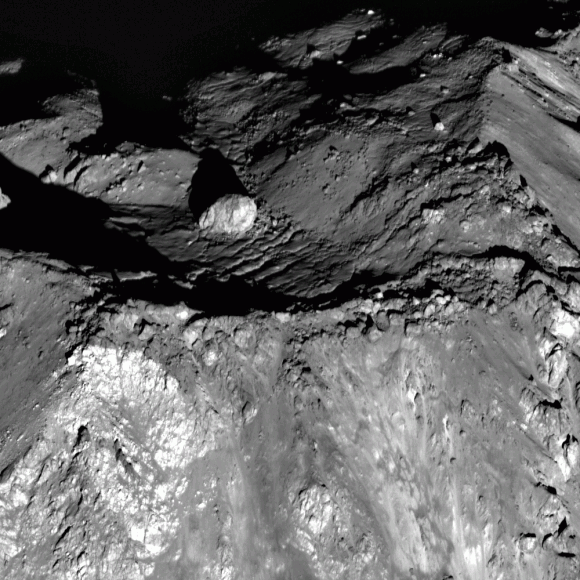
And here’s the entire crater:
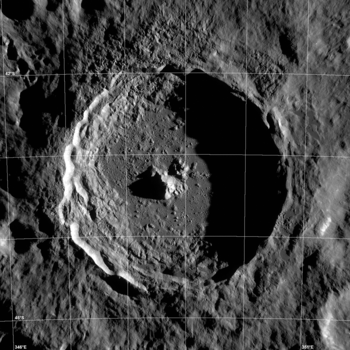
Click on the images for larger versions on the LROC website, or see this link for more information on these images.
Source: LROC
SpaceX Seeking Tweets From The Final Frontier
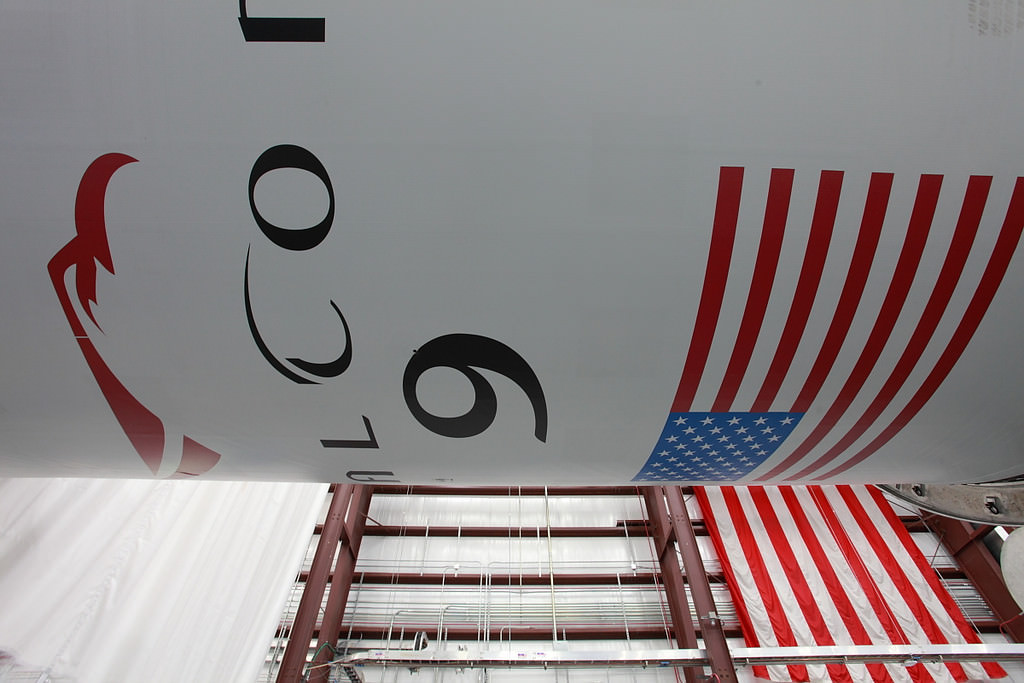
[/caption]
Space Exploration Technologies — or SpaceX as they are more commonly known — has gotten pretty good at launching rockets. Now they want the rest of the world to follow along – one Tweet at a time. The social media site Twitter allows users to post brief comments (under 140 characters). SpaceX views this as a means to keep the public informed about the company’s activities including the upcoming launch of the firm’s Falcon 9 rocket.
SpaceX can be found under the name of @SpaceXer. The NewSpace firm will post regular updates about the company’s activities on Twitter. SpaceX has been working to increase its public and media relations efforts lately. The push for more viewers on Twitter is part of these efforts.
“There are a lot of amazing things that are taking place at a daily basis at SpaceX,” said SpaceX’s Vice President of Communications Bobby Block. “We want to invite the public, everyone really, to follow these events on our Twitter account.”
SpaceX currently plans to launch the next of its Falcon 9 rockets this September. It will be another mission to prove out the Falcon 9’s readiness to begin cargo flights to the space station. For this mission, a flyby of the International Space Station is planned to test out communications equipment. The Dragon spacecraft will then reenter Earth’s atmosphere and splash down in the Pacific Ocean.
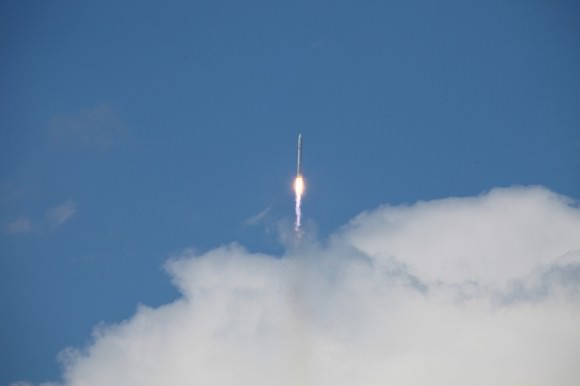
This will be the third time that SpaceX has launched a Falcon 9 from Space Launch Complex 40 at Cape Canaveral Air Force Station (CCAFS) in Florida. This past December SpaceX became the first private company to launch a spacecraft to orbit and retrieve it safely from the Pacific Ocean. It is accomplishments such as this that SpaceX wants to broadcast to the world.
“SpaceX has successfully demonstrated not only the viability of the Falcon 9 as a launch vehicle – but also the capabilities of the Dragon Spacecraft,” Block said. “This is just the beginning, now we want the world to come ride along with us.”
SpaceX was selected for not only the Commercial Orbital Transportation Services (COTS) contract with NASA – which has a $1.6 billion value but for NASA’s Commercial Crew Development 2 (CCDev-02) contract as well. Add to that the many business deals that SpaceX has made to send payloads into orbit – and SpaceX has a lot to tweet about.
SpaceX and founder Elon Musk have made it public knowledge regarding their plans to one day launch astronauts to the International Space Station, build a far larger version of its Falcon 9 dubbed the “Falcon Heavy” and to reach out to the planet Mars. SpaceX thinks with plans such as these in the works, space fans and novices alike will be very interested in following along.
Of course, SpaceX is not the only space organization that has recognized the value of social media like Twitter. NASA has embraced Twitter, with almost all of the missions and spacecrafts having Twitter accounts, and fans are finding Twitter to be a great way to find out the latest details from space. Additionally, NASA regularly hosts “Tweetups” when large events are scheduled to take place, such as the upcoming final launch of the space shuttle program.
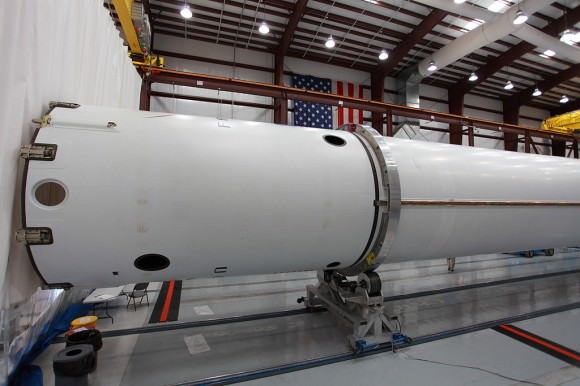
Dawn Closing in on Asteroid Vesta as Views Exceed Hubble
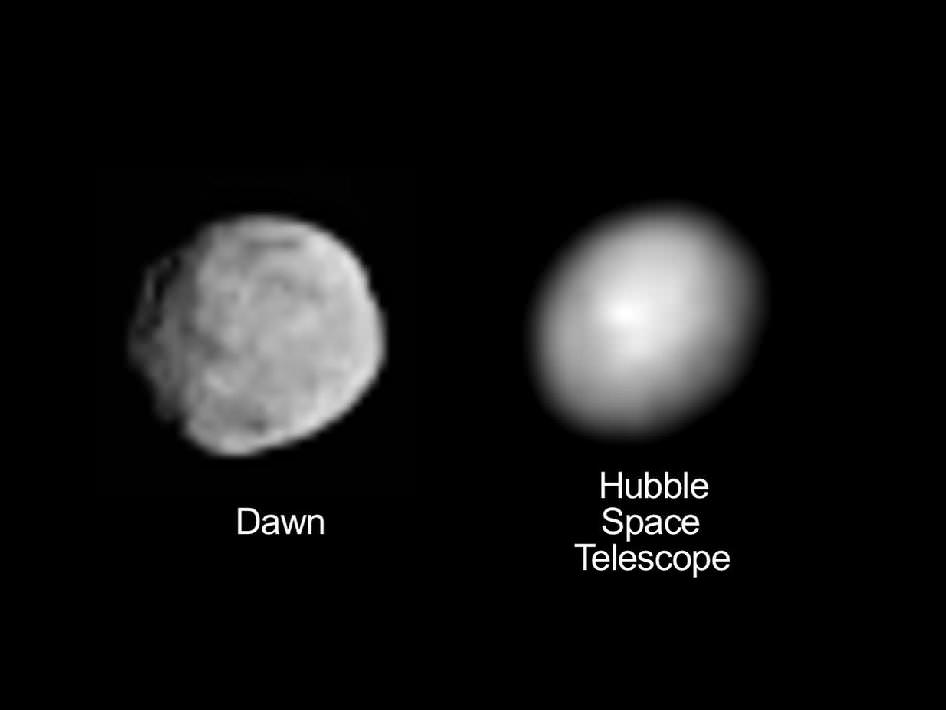
[/caption]
A new world in our Solar System is about to be unveiled for the first time – the mysterious protoplanet Vesta, which is the second most massive object in the main Asteroid Belt between Mars and Jupiter.
NASA’s Dawn Asteroid orbiter has entered its final approach phase to Vesta and for the first time is snapping images that finally exceed those taken several years ago by the iconic Hubble Space Telescope.
“The Dawn science campaign at Vesta will unveil a mysterious world, an object that can tell us much about the earliest formation of the planets and the solar system,” said Jim Adams, Deputy Director, Planetary Science Directorate at NASA HQ at a briefing for reporters.
Vesta holds a record of the earliest history of the solar system. The protoplanet failed to form into a full planet due to its close proximity to Jupiter.
Check out this amazing NASA approach video showing Vesta growing in Dawn’s eyes. The compilation of navigation images from Dawn’s framing camera spans about seven weeks from May 3 to June 20 was released at the NASA press briefing by the Dawn science team.
Dawn’s Approach to Vesta – Video
Best View from Hubble – Video
Be sure to notice that Vesta’s south pole is missing due to a cataclysmic event eons ago that created a massive impact crater – soon to be unveiled in astounding clarity. Some of that colossal debris sped toward Earth and survived the terror of atmospheric entry. Planetary Scientists believe that about 5% of all known meteorites originated from Vesta, based on spectral evidence.
After a journey of four years and 1.7 billion miles, NASA’s revolutionary Dawn spacecraft thrusting via exotic ion propulsion is now less than 95,000 miles distant from Vesta, shaping its path through space to match the asteroid.
The internationally funded probe should be captured into orbit on July 16 at an initial altitude of 9,900 miles when Vesta is some 117 million miles from Earth.
After adjustments to lower Dawn to an initial reconnaissance orbit of approximately 1,700 miles, the science campaign is set to kick off in August with the collection of global color images and spectral data including compositional data in different wavelengths of reflected light.
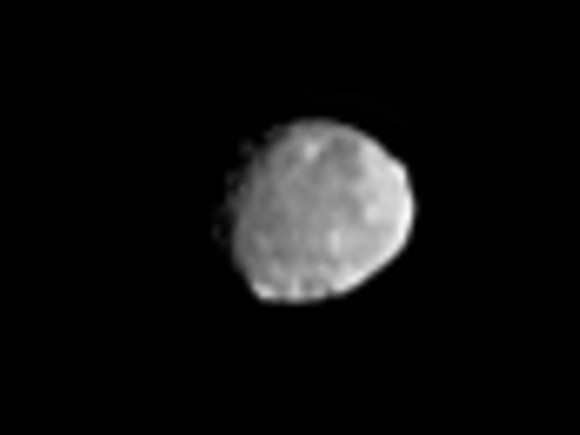
Dawn obtained this image on June 20, 2011. Credit: NASA/JPL-Caltech/UCLA/MPS/DLR/PSI and NASA/ESA/STScI/UMd
Dawn will spend a year investigating Vesta. It will probe the protoplanet using its three onboard science instruments – provided by Germany, Italy and the US – and provide researchers with the first bird’s eye images, global maps and detailed scientific measurements to elucidate the chemical composition and internal structure of a giant asteroid.
“Navigation images from Dawn’s framing camera have given us intriguing hints of Vesta, but we’re looking forward to the heart of Vesta operations, when we begin officially collecting science data,” said Christopher Russell, Dawn principal investigator, at the University of California, Los Angeles (UCLA). “We can’t wait for Dawn to peel back the layers of time and reveal the early history of our solar system.”
Because Dawn is now so close to Vesta, the frequency of imaging will be increased to twice a week to achieve the required navigational accuracy to successfully enter orbit., according to Marc Rayman, Dawn Chief Engineer at the Jet Propulsion Laboratory (JPL) in Pasadena, Calif.
“By the beginning of August, it will see Vesta with more than 100 times the clarity that Hubble could ever obtain,” says Rayman.
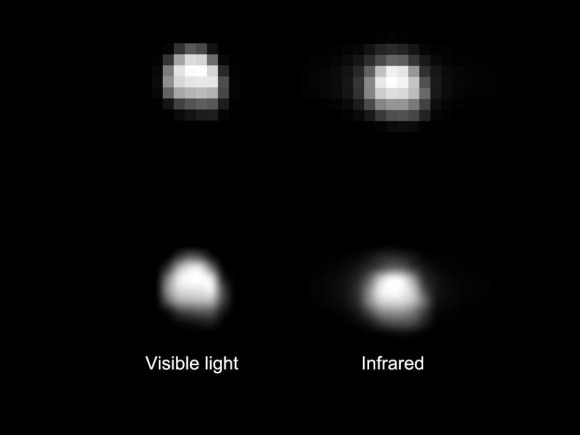
On June 8, 2011, the visible and infrared mapping spectrometer aboard NASA's Dawn spacecraft captured the instrument's first images of Vesta that are larger than a few pixels, from a distance of about 218,000 miles (351,000 kilometers). The image was taken for calibration purposes. An image obtained in the visible part of the light spectrum appears on the left. An image obtained in the infrared spectrum, at around 3 microns in wavelength, appears on the right. The spatial resolution of this image is about 60 miles (90 kilometers) per pixel. Credit: NASA/JPL-Caltech/UCLA/ASI/INAF
Dawn will gradually edge down closer to altitudes of 420 miles and 120 miles to obtain ever higher resolution orbital images and spectal data before spiraling back out and eventually setting sail for Ceres, the largest asteroid of them all.
Dawn will be the first spacecraft to orbit two celestial bodies, only made possible via the ion propulsion system. With a wingspan of 65 feet, it’s the largest planetary mission NASA has ever launched.
“We’ve packed our year at Vesta chock-full of science observations to help us unravel the mysteries of Vesta,” said Carol Raymond, Dawn’s deputy principal investigator at JPL.
“This is an unprecedented opportunity to spend a year at a body that we know almost nothing about,” added Raymond. “We are very interested in the south pole because the impact exposed the deep interior of Vesta. We’ll be able to look at features down to tens of meters so we can decipher the geologic history of Vesta.”
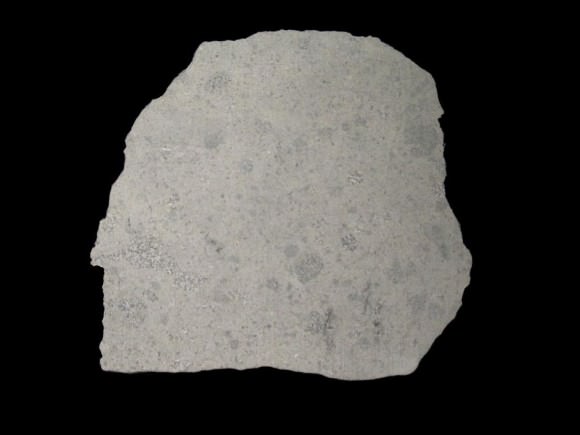
Scientists believe a large number of the meteorites that are found on Earth originate from the protoplanet Vesta. A cataclysmic impact at the south pole of Vesta, the second most massive object in the main asteroid belt, created an enormous crater and excavated a great deal of debris. Some of that debris ended up as other asteroids and some of it likely ended up on Earth. Image Credit: NASA/JPL-Caltech
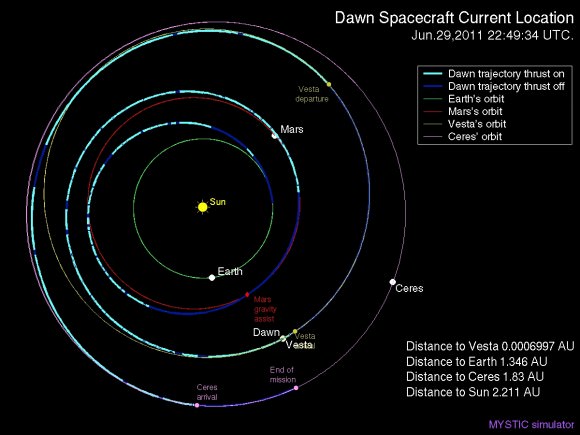

Read my prior feature about Dawn here
Noctilucent Clouds and A Bright Northern Star
[/caption]
Noctilucent Clouds are finally here! Well, at least they were for me at about 3:00am on the 29th of June.
I have heard that there have been some sightings, but for me, this mornings display heralds the new NLC season – a month later than usual?
Conditions were amazingly warm, and the night was still and magical as I looked northwards from my home in West Berkshire UK. I couldn’t help but notice a burning bright star almost due North and quite low, Capella in the constellation of Auriga! This is when I spotted the first faint wisps of noctilucent cloud.
Capella isn’t always in the North, but it is this time of year and it usually makes a guest appearance during morning noctilucent cloud displays.
Noctilucent clouds are very rare and tenuous clouds on the edge of space and occur at altitudes of around 76 to 85 kilometers (47 to 53 miles).
They are only seen when conditions are just right (still not fully understood) after sunset or before sunrise. They are illuminated by the sun, which is still way below the horizon from the observers location. Due to their very delicate nature, noctilucent clouds can only be seen at these times. More info on what NLC’s are, can be found here
Will you see any NLC’s?
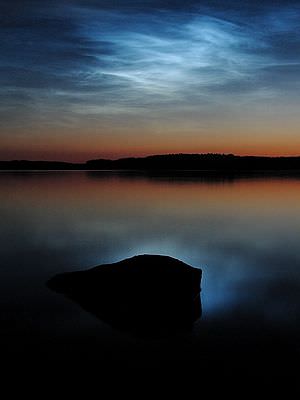
Neutron Star Burps Up Stellar Gas
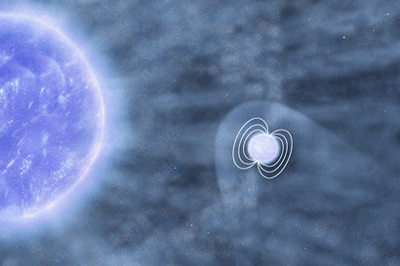
During a routine twelve and a half hour observation of star system IGR J18410-0535, the XMM-Newton caught an event that would make Emily Post proud… a not-so-discreet burp from a neutron star. Continue reading “Neutron Star Burps Up Stellar Gas”
Fermilab Unravels More About Neutrino Mystery
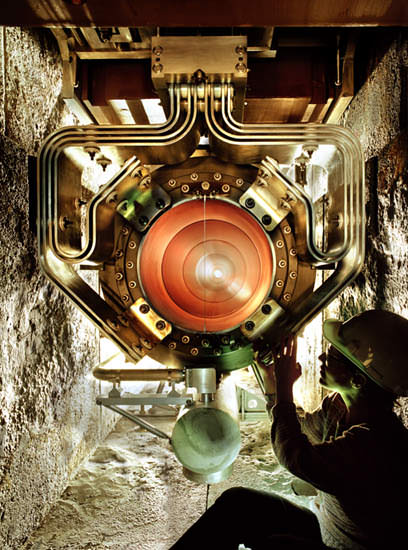
[/caption]
Right when you thought that Fermilab was a thing of the past, new work with neutrinos are exciting us all over again. The scientists associated with the MINOS experiment at the Department of Energy’s Fermi National Accelerator Laboratory just announced their findings of a rare phenomena – the transformation of muon neutrinos into electron neutrinos.
On June 14 the Japanese T2K experiment also found clues to this type of transformation. These dual reports could have a profound impact on the way we understand how neutrinos impacted the evolution of our Universe. What burning question do the results answer? Try why there is more matter than anti-matter. If muon neutrinos transform into electron neutrinos, neutrinos could be the reason.
“The Main Injector Neutrino Oscillation Search (MINOS) at Fermilab recorded a total of 62 electron neutrino-like events. If muon neutrinos do not transform into electron neutrinos, then MINOS should have seen only 49 events.” says Fermilab. “The experiment should have seen 71 events if neutrinos transform as often as suggested by recent results from the Tokai-to-Kamioka (T2K) experiment in Japan.”
Using entirely different methods, the two neutrino experiments went to work. To measure the transformation of muon neutrinos into other neutrinos, the MINOS experiment sends a muon neutrino beam 450 miles (735 kilometers) through the Earth from the Main Injector accelerator at Fermilab to a 5,000-ton neutrino detector, located half a mile underground in the Soudan Underground Laboratory in northern Minnesota. The nearly twin detectors have different purposes. At Fermilab the purity of the muon neutrino beam is calibrated while Soudan detects electron and muon activity. It’s a fast trip, too…but just one four hundreths of a second is all it takes for these incredibly tiny particles to transform.
“Science usually proceeds in small steps rather than sudden, big discoveries, and this certainly has been true for neutrino research,” said Jenny Thomas from University College London, co-spokesperson for the MINOS experiment. “If the transformation from muon neutrinos to electron neutrinos occurs at a large enough rate, future experiments should find out whether nature has given us two light neutrinos and one heavy neutrino, or vice versa. This is really the next big thing in neutrino physics.”
For more information read the Fermilab Press Release.
NASA Sets July 8 for Mandatory Space Shuttle Grand Finale
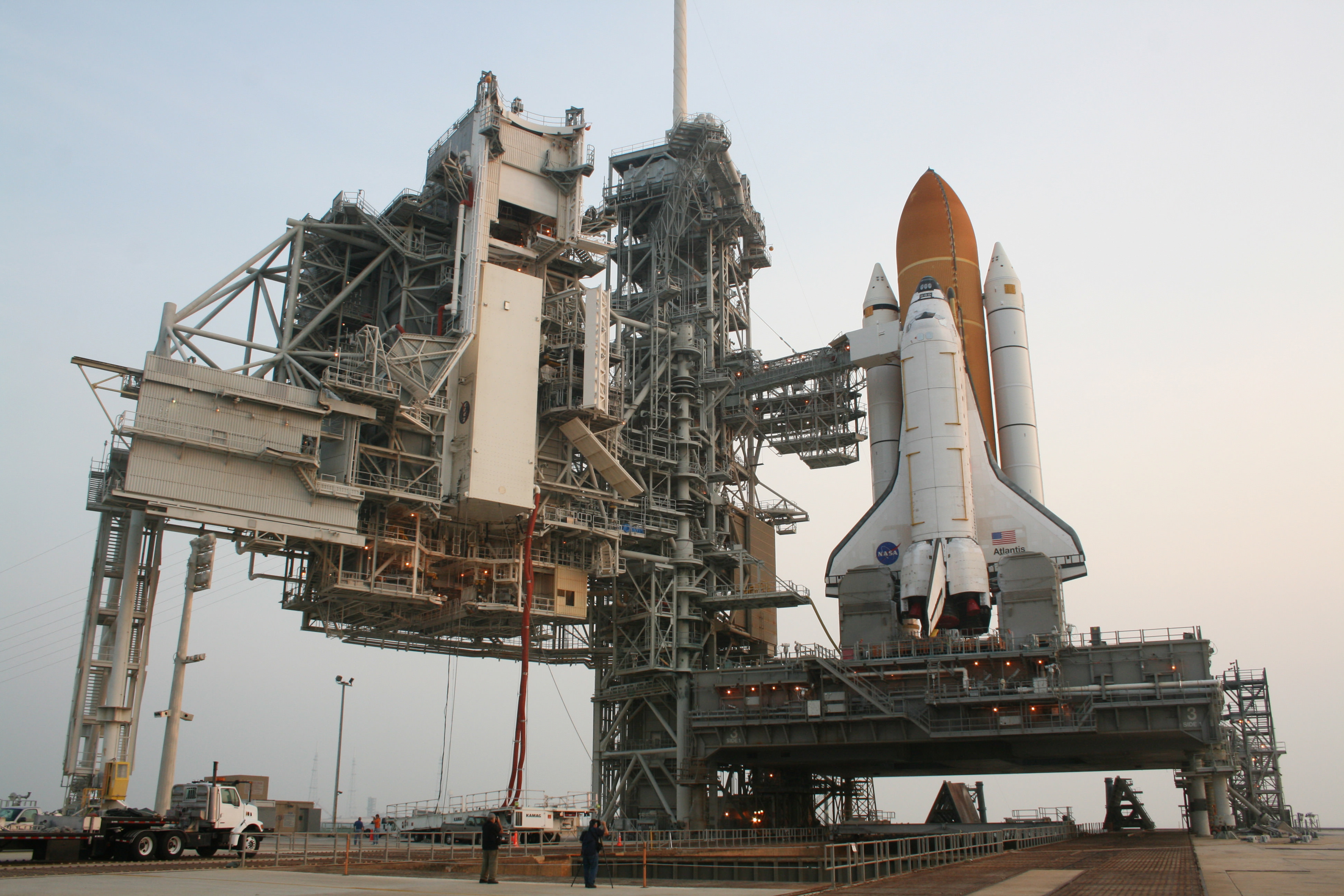
[/caption]
NASA Shuttle managers met today (28 June) and officially set July 8 as the launch date for the Grand Finale of the shuttle program by Space Shuttle Atlantis. And the NASA officials also emphasized that the STS-135 mission is absolutely crucial to the future well being and functioning of the International Space Station (ISS).
“This flight is incredibly important,” said Bill Gerstenmaier, NASA associate administrator for space operations. “The cargo that is coming up on this flight is really mandatory for space station. This mission is critical from a resupply standpoint. We will stay on orbit in case of some small orbiter failures.”
Atlantis’ primary goal is to dock with the million pound orbiting outpost and deliver the “Raffaello” logistics module. Raffaello is packed to the gills with some 5 tons of critical spare parts, food, water, provisions and science equipment that will keep the station stocked and the crew fed for a year. About one third of the cargo is food.
The STS 135 mission will buy invaluable time to keep the station running and science experiments continuing full tilt after the shuttles are retired and until replacement cargo vehicles are brought online.
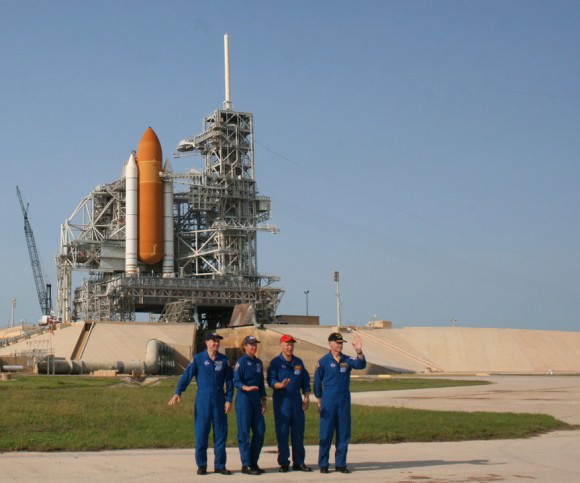
NASA hopes that commercial providers – SpaceX and Orbital Sciences – will soon pick up the slack and fill the supply void created by prematurely shutting down the shuttles now, before the replacement vehicles are functioning and proven. If the private company’s spacecraft are further delayed, then the ISS crew size may have to be reduced from 6 to 3 and station science operations could be significantly curtailed.
NASA announced the unanimous “GO” for the July 8 liftoff following a day long Flight Readiness Review at the Kennedy Space Center involving senior shuttle managers from the NASA and contractor teams.
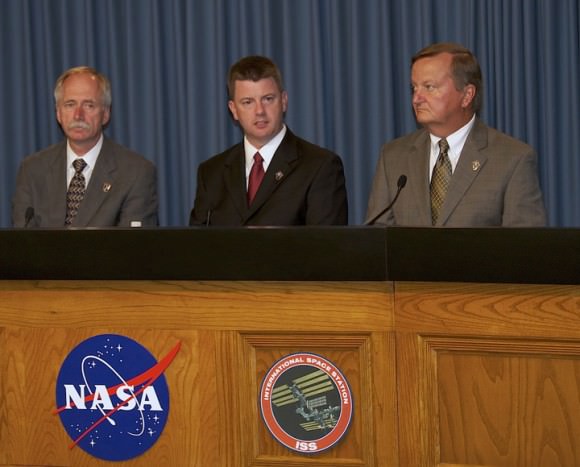
“We had a very thorough review,” said Gerstenmaier. Shuttle managers reviewed the shuttle and launch pad systems, the risks associated with the flight as well as the payloads tucked inside the orbiter and an assortment of technical issues and problems that cropped up during the pre-launch processing.
The STS-135 crew comprises of just four astronauts, all veterans, led by Shuttle Commander Ferguson who is joined by Pilot Doug Hurley, and Mission Specialists Sandy Magnus and Rex Walheim. They are scheduled to fly back to Kennedy on Independence Day, Monday, July 4, for the final days of launch preparations.
Since there is no back up rescue shuttle, the shuttle astronauts would have to return to Earth aboard Russian Soyuz capsules in the event of an on orbit emergency.
“We’re really looking forward to achieving this mission, putting station where it needs to be and finishing strong with the shuttle program here with STS-135,” said Mike Moses, Space Shuttle Program launch integration manager.
Moses added that NASA very much wants to extend the planned 12 day flight by one more day to give the crew more time to transfer cargo back and forth between Raffaello and the station.
NASA especially wants to fully load Raffaello for the return trip with experiment samples and voluminous no longer needed items of trash to give the station crew additional work and storage space. The extension depends on consumables use and will be decided once on orbit. Without the shuttle, down mass capability will be severely limited until the private providers are ready.
Technicians at the pad worked successfully to swap out a faulty shuttle engine valve and take X-rays of reinforcing joints on the External Tank after the recent tanking test, thus enabling NASA to approve the July 8 launch date.
“Atlantis is in great shape out at the pad,” said Mike Leinbach, shuttle launch director. “Team Atlantis is feeling good about the flow and the launch countdown and hope we’ll be able to get her off the ground on Friday the 8th as scheduled.”
“We expect between 500,000 and 750,000 visitors for the launch,” added Leinbach. “We have three launch attempts available on July 8, 9 and 10.”
The countdown clocks will start ticking backwards at 1 p.m. on July 5. STS-135 is the 135th and last shuttle mission.
This will be Atlantis’ 33rd flight and the 37th overall to the station.
Atlantis will be the last of NASA’s three shuttle orbiters to be retired.
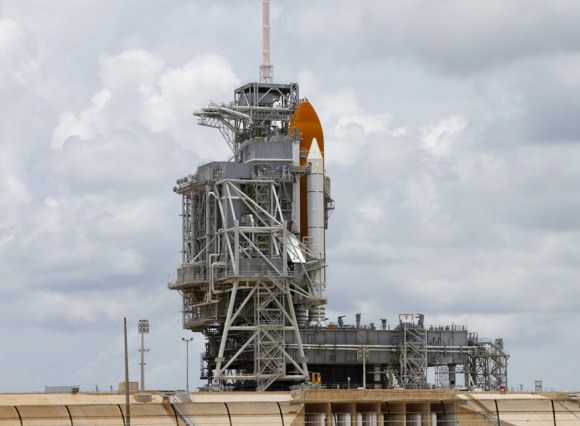
Read my prior features about the Final Shuttle mission, STS-135, here:
Final Shuttle Voyagers Conduct Countdown Practice at Florida Launch Pad
Final Payload for Final Shuttle Flight Delivered to the Launch Pad
Last Ever Shuttle Journeys out to the Launch Pad; Photo Gallery
Atlantis Goes Vertical for the Last Time
Atlantis Rolls to Vehicle Assembly Building with Final Space Shuttle Crew for July 8 Blastoff
3D Galaxies – Coming Straight On For You
As we’ve recently learned, the ATLAS3D project was able to study 260 individual galaxies and do some very amazing things. By imaging in both red and blue shift, astronomers were able to take stellar measurements and give us a clear picture of galaxy rotation. But looking at a computer generated image gives a picture just like you reading the text in this article – no dimension. By superimposing the velocity of the stars over the plane of the image, a new breakthrough in simulation can be made. And it’s coming straight on for you… Continue reading “3D Galaxies – Coming Straight On For You”
A Glitch in Pulsar J1718-3718
[/caption]
Pulsars are noted as being some of the universe’s best clocks. Their highly magnetized nature gives rise to beams of high energy radiation that sweep out across the universe. If these beams pass Earth, they can rival atomic clocks in their precision. So precise are these timings, that the first extrasolar planet was discovered through the effects it had on this heartbeat. But in September of 2007, pulsar J1718-3719 appears to have had a seizure.
These disjunctions aren’t unprecedented. While not exactly frequent, such “glitches” have been noted previously in other pulsars and magnetars. These glitches are often displayed as a sudden change in the period of the pulsar suddenly drops and then slowly relaxes back to the pre-glitch value at a characteristic rate dependent on the previous value as well as how large the jump was. Behavior like this has been seen in other pulsars including PSR B2334+61 and PSR 1048-5397.
The size of a glitch is measured as a ratio of the change in speed due to the glitch as compared to that of the pre-glitch speed. For past glitches, these have generally been changes that are around a hundredth of a percent. While this may not sound like a large change, the stars on which they act are exceptionally dense neutron stars. As such, even a small change in rotational energy means a large amount of energy involved.
Previously, the largest known glitch was 20.5 x 10-6 for PSR B2334+61. The new glitch in PSR J1718-3718 beats this record with a frequency change of 33.25 x 10-6. Aside from being a record setter, this new glitch does not appear to be following the trend of returning to previous values. The changed period persisted for the 700 days astronomers at the Australia Telescope National Facility observed it. Pulsars tend to have a slow braking applied to them due to a difference between their rotational axes and their magnetic ones. This too generally returns to a standard value for a given pulsar following a glitch, but PSR J1718-3718 defied expectations here as well, having a persistently higher braking effect which has continued to increase.
Currently, astronomers know precious little about the effects which may cause these glitches. There is no evidence to suggest that the phenomenon is something external to the body itself. Instead, astronomers suspect that there are occasional alignments of the stars internal superfluid core which rotates more quickly, with the star’s crust that cause the two to occasionally lock together. Models of neutron stars have had some success at reproducing this odd behavior, but none have suggested an event like PSR J1718-3718. Instead, the authors of the recent study suggest that this may have been caused by a fracturing of the crust of the neutron star or some yet unknown internal reaction. The possibilities currently are not well constrained but studying future events like these will help astronomers refine their models.

